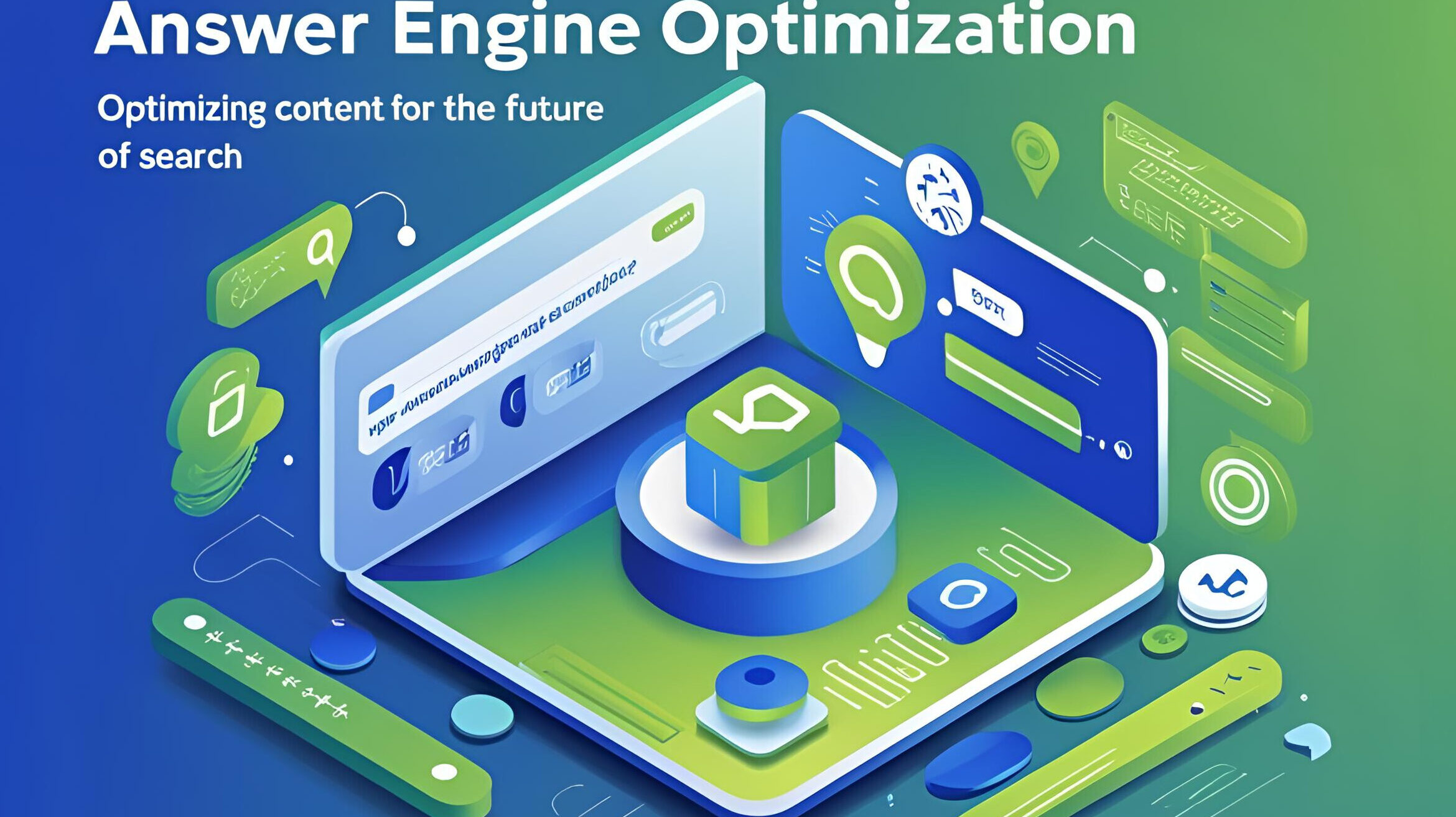Answer Engine Optimization (AEO): Optimizing Content for the Future of Search
Introduction:
The digital landscape is evolving rapidly. The way people search for and consume information has changed dramatically, especially with the rise of AI assistants, voice search, and smart devices. In today’s environment, traditional search engine optimization (SEO) alone is no longer sufficient.
Enter Answer Engine Optimization (AEO) — a modern content strategy that focuses on delivering concise, accurate answers that satisfy user intent. Designed for platforms like voice assistants, AI chatbots, and search engines with featured snippets, AEO ensures your content appears exactly when and how users need it.
In this article, we’ll explore what AEO is, how it differs from SEO, why it matters in 2025 and beyond, and how you can optimize your content to stay visible, relevant, and competitive.
What is AEO?
Answer Engine Optimization (AEO) is the process of structuring content to deliver clear, precise answers to users’ questions. This approach is especially tailored for AI-powered systems — like Google’s featured snippets, Siri, Alexa, and ChatGPT — that retrieve and present information directly, often without linking back to a website.
Unlike SEO, which aims to improve rankings in traditional search engine results pages (SERPs), AEO targets “answer engines” that prioritize understanding user intent and delivering immediate, concise responses.
A More Precise Definition
“AEO is the process of crafting content that directly answers user queries in a structured, accessible format suitable for voice assistants, chatbots, and AI-driven tools.”
Why AEO Matters in the Modern Search Ecosystem
Several trends are accelerating the need for AEO:
- Voice-First Technology: Devices like Amazon Echo, Google Home, and smartphones increasingly rely on voice input and spoken results.
- Zero-Click Searches: Over half of Google searches now result in no clicks, as users get their answers directly on the results page.
- Conversational AI: Chatbots and virtual assistants deliver instant, summarized responses, reducing the need to browse full articles.
In this environment, AEO ensures your content remains accessible and authoritative — even when traditional clicks and rankings no longer dominate user behavior.
AEO vs. SEO: What’s the Difference?
While both aim to improve visibility, they focus on different strategies:
| Aspect | SEO | AEO |
| Goal | Rank on SERPs | Appear as direct answers in answer engines |
| Focus | Keywords, backlinks, page authority | User intent, question formats, structured data |
| Format | Long-form, optimized pages | FAQs, snippets, lists, concise paragraphs |
| Outcome | Higher rankings and traffic | Instant visibility via direct answers |
Benefits of AEO
- Increased Visibility
Your content can appear in featured snippets, voice responses, and AI-generated summaries, broadening its reach.
- Improved Engagement
By providing immediate answers, users are more likely to interact with and trust your content.
- Enhanced Credibility
Delivering helpful, accurate information positions your brand as an authority in your niche.
- Competitive Advantage
Adopting AEO early keeps your business ahead in the evolving digital search landscape.
How to Optimize Content for AEO

- Understand User Intent
Begin by identifying what your audience is seeking — a definition, a step-by-step guide, or a quick fact.
Tip: Use tools like Google’s “People Also Ask,” AnswerThePublic, or SEMrush’s Keyword Magic Tool for insights.
- Use Natural Language
Write in a conversational tone that mimics how users speak, especially for voice queries.
- Provide Direct Answers
Get to the point. Structure content using FAQs, how-to sections, and tutorials.
- Structure Your Content
Improve readability for both users and machines with:
- Clear headings (H2–H3)
- Bullet points or numbered lists
- Short paragraphs (40–60 words)
- Schema markup for structured data
Focus on long-tail keywords and natural phrasing to align with spoken search behavior.
Core Principles of AEO
- Match User Intent
Ensure your content directly addresses the user’s goal — whether informational, navigational, or transactional.
- Make It Machine-Friendly
Use clean formatting, consistent headings, and structured data to help AI systems process your content effectively.
- Create Snippet-Ready Responses
Structure your content to generate quick answers:
- Clear definitions: “What is AEO?”
- Lists: “Steps to optimize for AEO…”
- Short answers: “AEO is the process of…”
- Build Topic Authority
Develop a content hub. Link related articles, and cite reputable sources to establish expertise and trustworthiness.
- Adapt to Conversational Search
As voice queries become more natural and question-based, your content should reflect that tone and structure.
Best Practices for AEO
- Deliver value in every paragraph: Prioritize usefulness over word count.
- Be concise: Avoid fluff, repetition, and vague phrasing.
- Use relatable examples: Clarify abstract concepts with practical use cases.
- Stay updated: Refresh content regularly to maintain relevance and accuracy.
The Future of AEO
As AI redefines how users find information, AEO is becoming a default strategy for digital visibility.
What Lies Ahead
- Chat-Based Discovery: Tools like ChatGPT and Google’s AI Overviews provide instant summaries. AEO-optimized content is more likely to be featured.
- Multimodal Search: Search through voice, images, and videos is expanding. Content rich in context and multimedia will have an edge.
- Answers as Destinations: In a zero-click world, your content must fully satisfy the query — without needing a follow-up click.
Conclusion
Answer Engine Optimization isn’t just a trend — it’s a necessary evolution in digital strategy. As AI continues to shape the future of search, businesses must adapt their content to remain visible, credible, and effective.
By focusing on user intent, using conversational language, and structuring your content for answer engines, you can ensure your brand thrives in an AI-driven search environment.
Key Takeaways
- AEO is the future: It centers on providing direct answers, not just keyword placement.
- Benefits: Boosts visibility, trust, and engagement in AI search environments.
- Optimization tips: Understand intent, write naturally, format clearly, and prepare for voice search.
- Future-proof: Adapt your strategy to meet the demands of chat-based and multimodal search.
FAQs
Q1: What is Answer Engine Optimization (AEO)?
A: AEO is the process of creating structured content that provides direct, concise answers in AI-powered environments.
Q2: How does AEO differ from SEO?
A: SEO focuses on improving rankings using keywords and backlinks. AEO prioritizes answering user queries directly and efficiently.
Q3: Why is AEO important?
A: It makes your content discoverable and useful in zero-click, AI-driven search experiences.
Q4: How can I optimize for AEO?
A: Focus on user intent, write in natural language, provide direct answers, and apply schema markup.
Q5: What are the key benefits of AEO?
A: Increased visibility, stronger engagement, improved credibility, and a competitive advantage.
Q6: How can I measure AEO success?
A: Track snippet placements, voice assistant responses, zero-click traffic, and engagement metrics.
Q7: What’s the future of AEO?
A: It will evolve with voice, chat, and image-based search, rewarding content that answers questions quickly and clearly.
Q8: How do I stay updated?
A: Follow leading marketing blogs, attend SEO/AEO events, and engage in digital communities focused on search innovation.
Final Note
By embracing AEO today, you’re setting your brand up for long-term success in the future of search. Optimize for answers — and let your content speak for itself.
